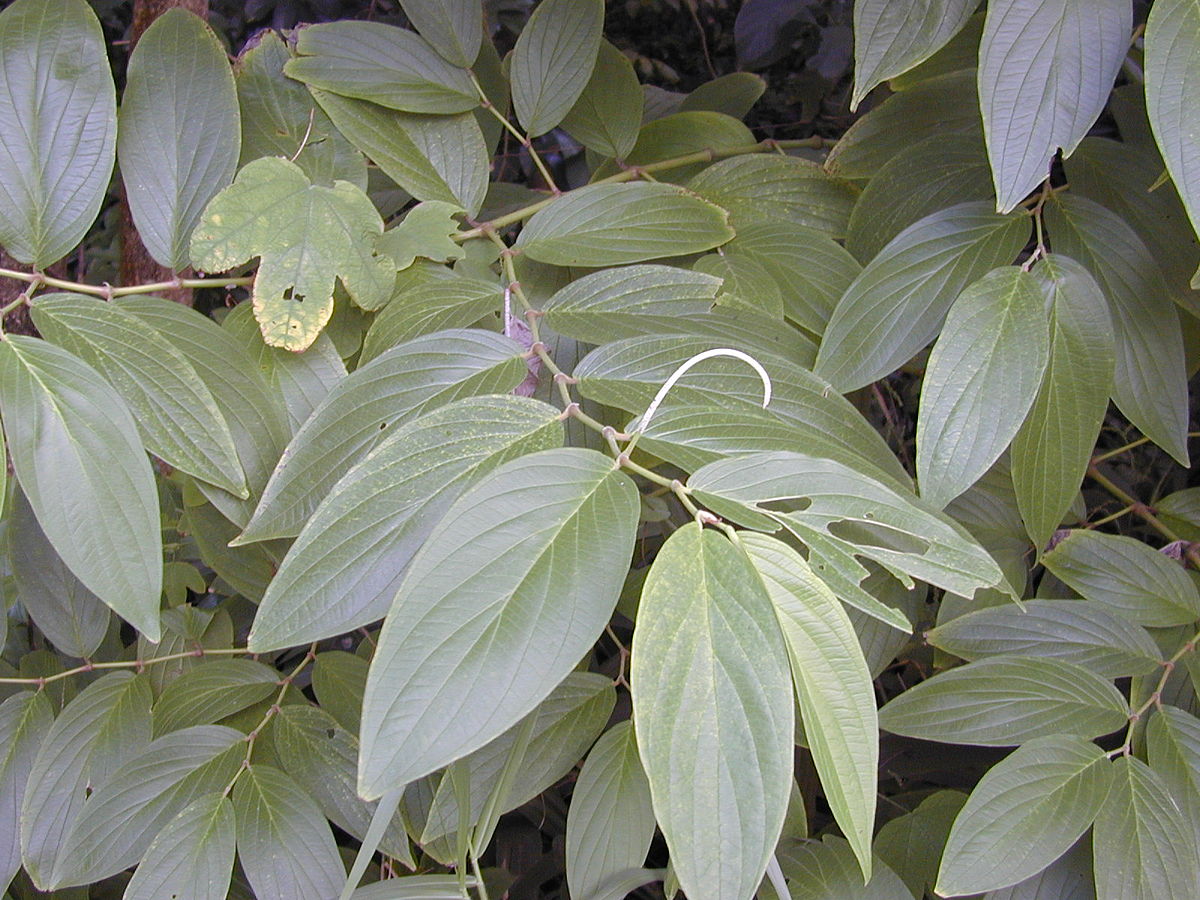Scientific name: Piper aduncum
Family: Piperaceae
Synonyms & Related Species: Artanthe adunca Miq., Piper angustifolium Ruiz & Rav., Piper celtidifolium Kunth., Piper elongatum Vahl.
Common Names: anisillo, aperta-ruão, bamboo piper, cordoncillo, cordoncillo negro, erba disoldato, erva-de-jaboti, erva-de-soldado, false kava, gaa ma da oedoe, guayayo, gusanillo, herbe du soldat, higuillo, higuillo de hoja, hoja santa, jaborandi falso, jawawa, jointwood, kakoro,malembe toto, man-anihs, matico pepper, matico, maticoblätter, matika, matiko, menuda, moco-moco, moho-moho, mucumucu, pimenta de fruto ganxoso, pimenta-de-fruto-ganchoso, pimenta-de-macaco, pimenta-matico, Santa Maria negro, shiatani, soldaten kraut, soldier’s herb, spiked pepper, tapa-curaco, tokondé, tupa burraco, upnpoingpoing, wer-ui-qui-yik, little black string

Frequently found in cloud forest, tropical semi-evergreen forest and tropical rainforest. As a shrub it is common in disturbed areas.
Characteristics
The leaves have an aromatic smell when rubbed and a bitter, mildly astringent taste.

It contains many active chemicals including flavonoids, sequiterpenes, monoterpenes, heterocycles, phenylpropanoids, alkaloids, and benzenoids. A group of chemicals called chromenes have been found in the leaves (and its essential oil) which have evidenced toxic effects to cancer cells and bacteria. Other chemicals, including a group of bezenoid chemicals, have also demonstrated antibacterial and cytotoxic actions as well. Matico also contains a chemical called safrol which has been used successfully in powerful insecticides, fragrances, soaps and detergent products (Taylor 2006).
Action
Main Actions (in order): stomachic, carminative, vulnerary, antiseptic, hemostat
Properties/Actions Documented by Research
Antibacterial, anticandidal, antifungal, anti-leishmaniasis, antiyeast, antiviral, cytotoxic, insecticidal, molluscicidal
Properties/Actions Documented by Traditional Use
Anti-hemorrhagic, anti-inflammatory, antiseptic, antispasmodic, astringent, carminative, cicatrizant, chologogue, decongestant, depurative, disinfectant, diuretic, expectorant, hemostat, nervine, panacea, purgative, resolvent, stomachic, stimulant, styptic, tonic, vulnerary
Medicinal Parts
The medicinal part of the plant is the leaf.
Main Uses
- for digestive problems (vomiting, nausea, stomachaches, dyspepsia, dysentary)
- as a carminative and stomachic to expel intestinal gas and aid digestion
- as an antiseptic, used externally for wounds, cuts, scrapes, ulcers, boils, leech bites, mouth wash etc.
- as a hemostat for internal bleeding (uterine, gastric, pulmonary)
- for colds, flu, coughs, bronchitis, pneumonia and other respiratory problems
- for bacterial infections
- sexual dysfunction, infections of the gentrourinary tract
- gonorrhea, sphyllis and other sexually transmitted diseases (STDs)
- for kidneys – prevent the development of stones and also protects the liver

Production
It is cultivated as a medicinal plant in the countries of origin. The leaves are the dried leaves of Piper elongatum, Piper aduncum L etc. The fresh leaves are also used medicinally.
Dosage
The dosage recorded are as given in herbal literature.
Infusion: 1 cup 2-3 times daily (single dose: 1 g herb per cup; or 10% infusion: taken 3 or 4 times daily) (PDR)
Fluid extract: 2-3 ml twice daily
Capsules: 0.5 to 2 g 3 to 4 times daily (PDR)
Powder: 0.5 to 2 g herb, 3 to 4 times daily
Infusion: single dose: 1 g herb per cup; or 10% infusion: taken 3 or 4 times daily
Tincture [1:5, 50% alcohol]: 1/2 to 1 teaspoon in cup of warm water, to 4 times a day. (Moore 1995)
Precautions and Adverse Reactions
No health hazards are known in conjunction with the proper administration of designated therapeutic dosages.
Caution and Contraindications
Avoid use during pregnancy, when breastfeeding or if you have acidity (gastric).
Reference(s)
Herbal Materia Medica fifth edition (1995). Michael Moore
The Red List of Mexican Cloud Forest Trees. Editors: Mario González-Espinosa, Jorge A. Meave, Francisco G. Lorea-Hernández, Guillermo Ibarra-Manríquez and Adrian C. Newton
Technical Data Report for Matico (Piper aduncum, angustifolium) (2006). Leslie Taylor, ND
Let’s Get Ready With Herbs (2007). Debra Rayburn
PDR for Herbal Medicines (2000). Joerg Gruenwald, PhD etal.
https://knehnav.home.xs4all.nl/Sarita%20Colonia/plantas%20medicinales/Cordoncillo.html
DISCLAIMER: THIS WEBSITE DOES NOT PROVIDE MEDICAL ADVICE
The information, including but not limited to, text, graphics, images and other material contained on this website are for informational purposes only. The purpose of this website is to promote broad consumer understanding and knowledge of various health topics. It is not intended to be a substitute for professional medical advice, diagnosis or treatment. Always seek the advice of your physician or other qualified health care provider with any questions you may have regarding a medical condition or treatment and before undertaking a new health care regimen, and never disregard professional medical advice or delay in seeking it because of something you have read on this website.